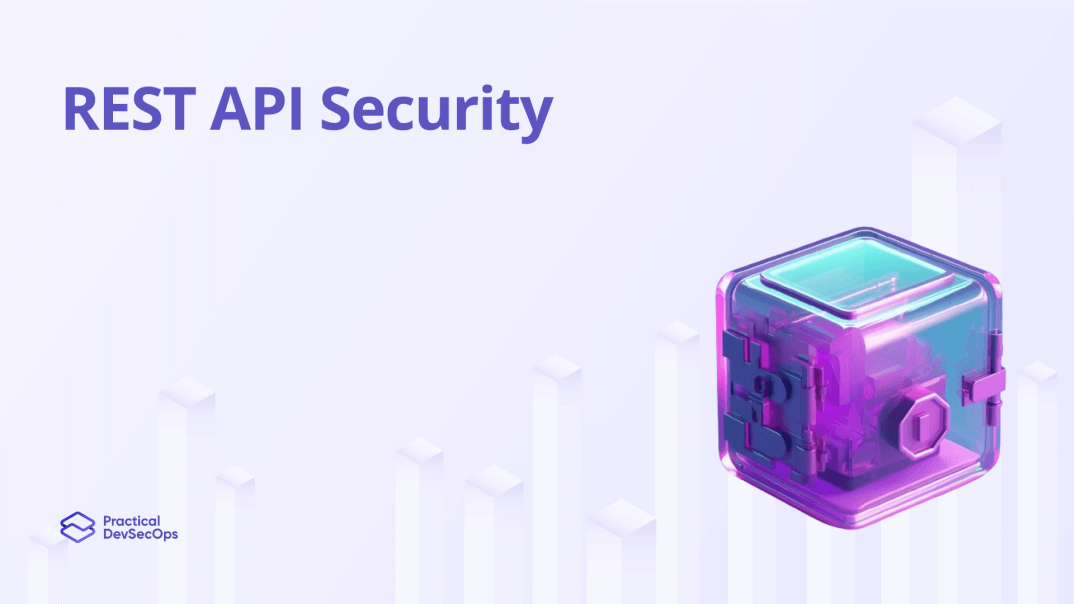As applications increasingly rely on web services to exchange data and functionality, the security of these services becomes paramount. Representational State Transfer (REST) is a popular architectural style for designing web services. REST APIs serve as the backbone for communication between clients and servers in a RESTful architecture.
In this article, we will explore REST API security, discuss its importance, and highlight best practices to safeguard your data and resources.
What is REST API Security?
REST API security refers to the protective measures implemented to prevent unauthorized access, data breaches, and other security risks in systems that rely on RESTful web services. It involves establishing robust authentication and authorization mechanisms, validating input data, protecting sensitive information, and ensuring secure communication between clients and servers.
REST API security encompasses various layers, including network security, authentication, access control, input validation, encryption, and more. By addressing each of these layers, organizations can build secure and resilient REST APIs, safeguarding their data and ensuring the integrity of their systems.
How REST APIs Work?
REST (Representational State Transfer) APIs enable communication between client and server over HTTP. The client sends requests to the server specifying the desired action and resource, and the server responds with the requested data or confirmation of the action.
REST APIs are stateless, meaning each request contains all the information necessary for the server to fulfill it, facilitating scalability and simplicity. Resources are identified using URIs (Uniform Resource Identifiers), and the interaction follows a client-server architecture with a focus on resource representation, often in JSON or XML format.
Importance of REST API Security
Proper security measures for REST APIs are essential because:
- Prevention of Unauthorized Access: REST APIs often expose critical resources and sensitive data. Without adequate security, unauthorized users could gain access to sensitive information or manipulate system resources, leading to data breaches, service disruptions, or even financial losses.
- Protection of Data Integrity: REST APIs handle data exchanges between clients and servers. Ensuring the integrity of this data is vital to prevent tampering, injection attacks, or unauthorized modifications that could compromise the reliability and accuracy of the information.
- Mitigation of Denial of Service (DoS) Attacks: REST APIs are frequently subjected to denial-of-service attacks, where excessive requests overwhelm the server and disrupt its availability. By implementing proper security measures, including rate limiting and traffic monitoring, organizations can prevent or mitigate these attacks.
- Compliance with Regulatory Standards: Many industries have regulations in place to ensure the security and privacy of user data. By implementing proper REST API security measures, organizations can meet these compliance requirements and build trust with their customers.
HTTP Methods (GET, POST, PUT, DELETE)
REST APIs utilize standard HTTP methods to perform operations on resources:
- GET: Retrieves data from the server without modifying it. It is safe and idempotent.
- POST: Creates a new resource on the server. It can change the state or cause side effects.
- PUT: Updates an existing resource by replacing it with the request payload. It is idempotent.
- DELETE: Removes a resource from the server. It is idempotent.
These methods align with CRUD (Create, Read, Update, Delete) operations, enabling structured and predictable interactions.
Typical Attack Surface for APIs
APIs can be vulnerable through several attack surfaces, including
- Injection Attacks: Improper input sanitization can lead to SQL injection, NoSQL injection, or command injection.
- Broken Authentication: Weak or missing authentication mechanisms allow unauthorized access.
- Poor Authorization: Inadequate access control can permit users to access or modify resources they shouldn’t.
- Excessive Data Exposure: APIs returning more data than necessary can reveal sensitive information.
- Rate Limiting and Throttling Issues: Lack of controls can lead to denial-of-service attacks.
- Mass Assignment: Allowing clients to modify object properties that should not be exposed.
- Security Misconfiguration: Incorrect security headers or overly permissive CORS settings increase risk.
- Lack of Encryption: Data transmitted without TLS can be intercepted or manipulated.
OWASP API Top 10 Threats Explained
The OWASP API Security Top 10 highlights the most critical API security risks as of 2023:
- Broken Object Level Authorization (BOLA): Improper access controls allow attackers to manipulate object IDs and access data they shouldn’t.
- Broken Authentication: Weak or flawed authentication can let attackers hijack tokens and impersonate users.
- Broken Object Property Level Authorization: Failure to restrict access at the property level leads to data exposure or unauthorized modification.
- Unrestricted Resource Consumption: APIs without limits can be overwhelmed by excessive requests, causing denial of service or increased costs.
- Broken Function Level Authorization: Insufficient access control lets users execute unauthorized functions, including administrative actions.
- Unrestricted Access to Sensitive Business Flows: APIs expose important business processes without controls, enabling automated abuse.
- Server Side Request Forgery (SSRF): APIs fetch remote resources without validating URLs, allowing attackers to send malicious requests via the API server.
- Security Misconfiguration: Incorrect or insecure API settings can open doors for attackers.
- Improper Inventory Management: Outdated or undocumented API versions and endpoints increase risk of exploitation.
- Unsafe Consumption of APIs: Trusting third-party API data without sufficient validation can lead to compromise through integrated services.
These risks emphasize the need for thorough authentication, authorization, validation, resource control, and configuration management in API security
REST vs SOAP API Security – Key Differences
| Aspect | REST API | SOAP API |
| Protocol Style | Architectural style using standard HTTP methods | Protocol with strict standards and XML messaging |
| Data Format | Commonly JSON, also XML, plain text | Only XML |
| Message Security | Relies on HTTPS (TLS) for encryption | Supports WS-Security (message-level encryption, signatures) |
| Authentication | OAuth, JWT, API keys, token-based | WS-Security tokens, XML encryption, digital signatures |
| Statefulness | Stateless; each request independent | It can be stateless or stateful |
| Transport Protocol | HTTP/HTTPS only | Can use HTTP, SMTP, TCP, etc. |
| Message Size & Performance | Smaller messages; faster, cacheable | Larger, verbose messages; slower processing |
| Scalability | Easy to scale due to statelessness | Harder to scale; server may maintain state |
| Complexity | Simpler, lightweight, flexible | More complex, rigid structure |
| Security Overhead | Lower overhead using HTTPS | Higher overhead due to additional WS-Security headers |
| Use Cases | Modern web & mobile apps, public APIs | Enterprise, legacy applications, high-security needs |
Best Practices for REST API Security
To ensure the security of your REST API, consider implementing the following best practices:
1. Authentication and Authorization
- Utilize strong authentication mechanisms, such as bearer tokens, OAuth, or JSON Web Tokens (JWT).
- Employ granular access controls to restrict access to certain resources or actions within the API.
- Implement robust user management and enforce password security practices.
2. Secure Communication
- Protect the communication channel using HTTPS/SSL/TLS to encrypt data in transit.
- Disable insecure communication protocols, such as HTTP, and enforce secure connections.
3. Data Validation and Sanitization
- Validate and sanitize all input data and parameters to prevent injection attacks, such as SQL injection or cross-site scripting (XSS).
- Implement proper input validation checks to ensure data integrity and protect against malicious payloads.
Also Read, Guide to API Penetration Testing
4. Rate Limiting and Throttling
- Implement rate limiting to control the number of requests from a client within a certain time frame, preventing abuse or DoS attacks.
- Apply throttling to limit the number of requests a client can make in a given period, ensuring fair allocation of resources.
Also Read, API Security Testing and its Best Tools
5. Error Handling and Logging
- Implement secure error handling mechanisms to prevent sensitive information from being exposed in error responses.
- Enable detailed logging of API activities and monitor logs to identify potential security incidents or abnormalities.
6. Secure Storage of Credentials and Secrets
- Safely store and manage credentials and API keys by utilizing secure credential management systems, such as key vaults or encrypted databases.
- Avoid hard-coding credentials within the codebase to prevent accidental exposure.
7. Regular Security Testing and Auditing
- Conduct regular security testing, including vulnerability assessments and penetration testing, to identify and address any weaknesses or vulnerabilities.
- Perform security audits to ensure compliance with industry standards and best practices.
8. Implementing Role-Based Access Control (RBAC)
RBAC allows for the fine-grained control of user permissions and access levels to different resources within the API. By assigning roles based on user responsibilities, organizations can ensure that only authorized individuals can access and manipulate specific resources.
9. Implementing Two-Factor Authentication (2FA)
Two-factor authentication adds an extra layer of security by requiring users to provide a second form of verification, such as a code sent to their mobile device, in addition to their username and password. This helps mitigate the risk of unauthorized access, even if the user’s credentials are compromised.
10. Regular Updates and Patch Management
Keeping the REST API and all related components up to date is crucial for maintaining security. Updates often include bug fixes and security patches that address newly discovered vulnerabilities. It is essential to regularly apply updates to all software components involved in the API to ensure the latest security measures are in place.
Also Read, Quick Guide to API Security Management
11. API Security Gateway
Implementing an API security gateway can provide an added layer of protection for REST APIs. These gateways act as a centralized point for authentication, authorization, and validation of API requests. They can enforce security policies, control access, and provide logging and auditing capabilities.
Also Read, Guide to API Security Management
Real-World Example: Securing a Banking REST API
Imagine a banking institution that provides a REST API to facilitate account services for its customers. To ensure secure transactions and protect customer data, the bank implements rigorous REST API security measures. They employ OAuth for authentication, enforcing strong passwords and implementing role-based access controls. The API is protected using HTTPS, and all data input is thoroughly validated and sanitized to prevent any form of injection attacks. Error handling responses are carefully crafted to avoid leaking sensitive information. Regular security testing and audits are conducted to identify and mitigate any potential vulnerabilities.
Also Read, API Security Trends of 2024
API Security Testing Tools & Automation
OWASP ZAP (Zed Attack Proxy)
- An open-source dynamic application security testing (DAST) tool widely used for API and web app security.
- Understands API formats like JSON and XML and scans APIs to find vulnerabilities such as injection attacks, broken authentication, and security misconfigurations.
- Supports automated and manual testing, allowing proxying of API requests and active scanning.
- Integrates well into CI/CD pipelines for continuous API security validation.
- Can generate detailed security scan reports to help remediate issues.
Postman Security Testing
- Primarily an API development platform with extensive support for automated security testing scripts.
- Enables creating and running collections of API requests that simulate common attack scenarios (e.g., SQL injection, XSS).
- Supports custom security checks via JavaScript scripting to validate authentication, authorization, and logic flaws.
- Allows testing of API parameters, response analysis, and vulnerability assessment.
- Seamlessly integrates into CI/CD pipelines and with other security tools (like OWASP ZAP) for broader coverage.
- Facilitates collaboration between developers and security teams for holistic API testing.
Snyk
- Provides an AI-powered API security testing engine for automated detection of vulnerabilities.
- Maps complex API attack surfaces and performs authenticated scans, including behind firewalls.
- Supports customizable scanning, scheduled scans, and can handle APIs requiring SSO or OpenID Connect.
- Includes features for discovery and inventory of APIs to prevent untracked security risks.
- Integrates into developer workflows and CI/CD pipelines to enable continuous security testing and remediation guidance.
Burp Suite
- A leading security testing platform allowing interception, modification, and analysis of API traffic between clients and servers.
- Ideal for detecting improper authentication, authorization flaws, injection vulnerabilities, and excessive data exposure.
- Features tools like Repeater (to replay and modify requests) and Intruder (for automated fuzz testing).
- Supports both REST and GraphQL APIs with specialized features for schema introspection and payload manipulation.
- Enables comprehensive manual and automated testing with integration options to fit in security workflows.
These tools empower teams to automate API security testing, catch vulnerabilities early, and incorporate testing into the software development lifecycle to enhance overall API security posture.
Combining these solutions effectively can cover dynamic scanning, manual testing, and continuous automated security assessments.
Conclusion
REST API security is vital for protecting data integrity, preventing unauthorized access, and ensuring compliance with regulatory standards. By following best practices and implementing robust security mechanisms, organizations can secure their REST APIs, safeguarding their data and ensuring the integrity of their systems.
Interested in API Security Hands-On Upskilling?
Practical DevSecOps offers an excellent Certified API Security Professional (CASP) course with hands-on training through browser-based labs, 24/7 instructor support, and the best learning resources to upskill in API security.
Start your journey mastering API security today with Practical DevSecOps!
Download Free E-book on API Security
FAQ’s
How do you secure your REST API?
Use strong authentication (OAuth, JWT), enforce authorization, validate inputs, apply HTTPS/TLS, implement rate limiting, log and monitor traffic, and keep security configurations updated. Protect sensitive data and avoid exposing unnecessary information.
How to secure REST API without authentication?
Use IP allowlisting, rate limiting, HMAC (hash-based message authentication codes), content-based security policies, and public key infrastructure (PKI) encryption to verify request integrity and control access without user authentication.
What are the 4 types of REST API?
Open API (public), Partner API (shared with business partners), Private API (internal use), and Composite API (combines multiple data or services).
What is the security layer of REST API?
The primary security layer is Transport Layer Security (TLS/HTTPS) ensuring encrypted communication. Additional layers include authentication, authorization, input validation, and monitoring.
What are safe methods in REST API?
Safe methods are HTTP methods that do not alter server state: GET, HEAD, OPTIONS, and TRACE. They only retrieve data without causing side effects.
What are the 6 rules of REST API?
Uniform Interface, Client-Server Separation, Statelessness, Cacheability, Layered System, and Code on Demand.
Which algorithms are used to secure the REST API?
Common algorithms include HMAC (for message authentication), RSA/ECC (public-key encryption), SHA-256 (hashing), and algorithms used in JWT and OAuth2 tokens.
What are the common vulnerabilities in REST APIs?
Injection attacks, broken authentication, broken authorization, excessive data exposure, rate-limiting gaps, security misconfigurations, and lack of encryption.
Is HTTPS enough for API security?
No, HTTPS secures data in transit but does not replace authentication, authorization, input validation, and other security practices necessary to protect APIs.
Should I use JWT or OAuth2?
Use OAuth2 for delegated access and token management. JWT is often used within OAuth2 as a compact token format. Choose based on your security model and complexity needs.
What happens if I expose my API key?
Exposing an API key allows attackers to impersonate legitimate users, access data, and abuse API resources, causing data breaches or service disruptions. Rotate keys immediately and monitor usage for anomalies.




